For years many organizations assumed the cloud was inherently more secure than on-premises systems, and that belief drove widespread migration. But attackers are catching up: cloud-targeted attacks have jumped sharply, and relying on default protections is no longer enough.
“Although cloud malware attacks are on the rise, careful planning and strategic security measures will still keep your cloud infrastructure safe.” — Philipp Graves, CEO of Cytranet
Before migrating, establish security best practices so your environment is resilient from day one. Below is an overview of common cloud malware threats and practical steps to reduce your risk.
Six common cloud malware threats and how to stop them
1. Malicious OAuth apps
OAuth lets apps request access via tokens instead of passwords, but attackers can publish deceptive apps requesting broad permissions. If a user grants access, the app retains tokens and can access data via the provider’s API.
How to prevent it: Require admin approval for new app connections, allow only apps from verified publishers, regularly review and revoke unused app permissions, and block self-service installs.
2. IMDS token stealers
Cloud instances obtain short-lived credentials from the instance metadata service (IMDS). Malware that tricks a server into returning those tokens can call cloud APIs, exfiltrate data, or spawn resources.
How to prevent it: Enable the provider’s advanced metadata protections, block IMDS access from untrusted processes, enforce least-privilege roles, and rotate credentials frequently.
3. Container escape malware
A vulnerability that lets code escape a container can give attackers control of the host, exposing secrets and enabling lateral movement to other workloads.
How to prevent it: Keep container runtimes and base images patched, avoid granting unnecessary admin privileges to processes, run containers with reduced privileges and read-only filesystems, and use runtime security tooling.
4. Web shells in cloud apps
SQL injection and other flaws can let attackers write web shells to storage or app folders, giving remote command execution and access to internal services.
How to prevent it: Use parameterized queries and strict input validation, deploy a web application firewall, restrict outbound connections from app subnets, and monitor for unexpected files and unusual outbound traffic.
5. Object storage droppers
Malware stored in object buckets can masquerade as legitimate files, swap versions, or feed compromised auto-updaters and scripts.
How to prevent it: Disable public listing, require signed URLs for downloads, verify checksums, scan on upload/download, enable versioning and alerts, and restrict who can write or modify object ACLs.
6. Cross-tenant malware
Multi-tenant SaaS flaws can let attackers cross tenant boundaries and access data belonging to other customers.
How to prevent it: Choose vendors with documented tenant isolation and third-party testing, limit risky SaaS permissions, enable detailed activity logs, and use SaaS security tools to flag anomalous behavior and large data exports.
Key cloud hardening practices
Most cloud security failures stem from misconfiguration, so validate settings before going live. Core controls to implement:
– Start from secure templates and built-in policies; use provider blueprints.
– Require multifactor authentication for all users and admins.
– Apply least-privilege RBAC and restrict admin accounts (consider hardware security keys).
– Gate app connections: require admin consent for OAuth apps and verified publishers.
– Keep secrets out of code—use secrets managers (Azure Key Vault, AWS Secrets Manager, Google Secret Manager).
– Default to private access for services; use private links, firewalls, and allowlists.
– Protect object storage: private buckets, versioning, object lock, and upload/download scanning.
– Enable comprehensive audit logging and alerts for risky changes (new admins, public shares, policy edits).
– Patch images, runtimes, and services before deployment; scan packages and sign releases.
– Add a managed web application firewall and restrict outbound traffic by egress rules.
– Back up regularly, enable snapshots, and test restores.
– Monitor costs and set budget alerts to detect cryptomining or anomalous activity.
When to get outside help
If you lack in-house cloud security expertise, outsourcing is a cost-effective alternative to hiring and training new staff. Cytranet offers managed cloud security and migration support to help organizations migrate securely and continuously harden their cloud environments. Our team can implement these controls, run ongoing monitoring, and assist with incident response.
To learn more about defending your cloud workloads and building a secure migration strategy, reach out to Cytranet today.
The post “A Closer Look at Cloud Malware Attacks & How You Can Prevent Them” originally appeared on Cytranet.


